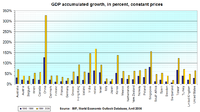
Photo from wikipedia
Peroxisome biogenesis genes (PEX) play an important role in growth, development, and pathogenicity in pathogenic fungi. However, the roles of PEX genes remain largely unknown in nematode-trapping (NT) fungi. ABSTRACT… Click to show full abstract
Peroxisome biogenesis genes (PEX) play an important role in growth, development, and pathogenicity in pathogenic fungi. However, the roles of PEX genes remain largely unknown in nematode-trapping (NT) fungi. ABSTRACT The peroxins encoded by PEX genes involved in peroxisome biogenesis play a crucial role in cellular metabolism and pathogenicity in fungi. Herein, we characterized a filamentous fungus-specific peroxin Pex14/17 in the Arthrobotrys oligospora, a representative species of nematode-trapping fungi. The deletion of AoPEX14/17 resulted in a remarkable reduction in mycelial growth, conidia yield, trap formation, and pathogenicity. Compared with the wild-type strain, the ΔAopex14/17 mutant exhibited more lipid droplet and reactive oxygen species accumulation accompanied with a significant decrease in fatty acid utilization and tolerance to oxidative stress. Transcriptomic analysis indicated that AoPEX14/17 was involved in the regulation of metabolism, genetic information processing, environmental information processing, and cellular processes. In subcellular morphology, the deletion of AoPEX14/17 resulted in a decrease in the number of cell nuclei, autophagosomes, and Woronin bodies. Metabolic profile analysis showed that AoPex14/17 affects the biosynthesis of secondary metabolites. Yeast two-hybrid assay revealed that AoPex14/17 interacted with AoPex14 but not with AoPex13. Taken together, our results suggest that Pex14/17 is the main factor for modulating growth, development, and pathogenicity in A. oligospora. IMPORTANCE Peroxisome biogenesis genes (PEX) play an important role in growth, development, and pathogenicity in pathogenic fungi. However, the roles of PEX genes remain largely unknown in nematode-trapping (NT) fungi. Here, we provide direct evidence that AoPex14/17 regulates mycelial growth, conidiation, trap formation, autophagy, endocytosis, catalase activity, stress response to oxidants, lipid metabolism, and reactive oxygen species production. Transcriptome analysis and metabolic profile suggested that AoPex14/17 is involved in multiple cellular processes and the regulation of secondary metabolism. Therefore, our study extends the functions of PEX genes, which helps to elucidate the mechanism of organelle development and trap formation in NT fungi and lays the foundation for the development of efficient nematode biocontrol agents.
Journal Title: mSphere
Year Published: 2023
Link to full text (if available)
Share on Social Media: Sign Up to like & get
recommendations!